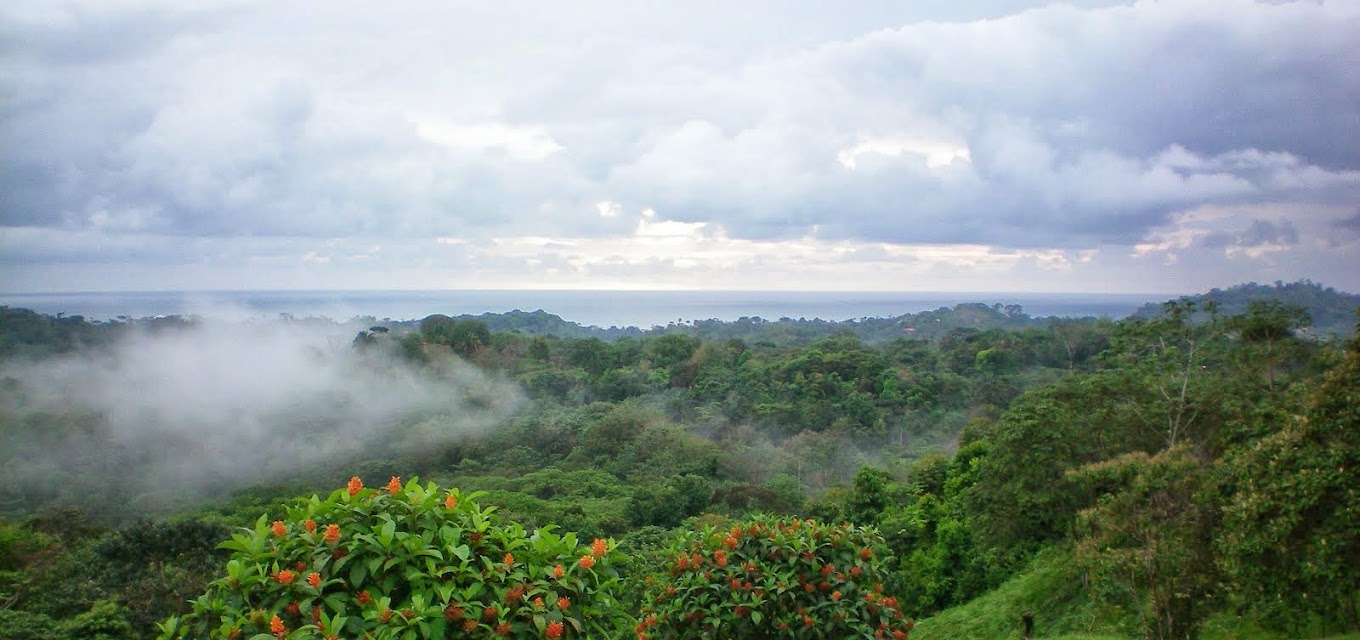http://www.bahiaaventuras.com/national-parks/marino-ballena/
You will find this National Park only a few miles north from the village of Ojochal.
There you can enjoy a whale watch adventure.
It is something worth to try.
The coastal waters of Costa Rica host as many as 25 different species of whales and dolphins, including the majestic humpback.
Very few things are as magical as seeing a magnificent humpback whale arching through the Open Ocean and Costa Rica is one of only two places in the world where whales from both the northern and southern hemispheres meet.
The Northern Humpback Whales migrate from Alaska and Western Canada; they arrive in late October and leave at the end of April.
The Southern Humpback Whales come from as far as the Antarctica; they arrive in late July and leave early November.
Humpbacks migrate up to 8700 km (5,400 miles) one-way between coldwater summer feeding areas and the warmer winter breeding grounds. On the Pacific coast of Costa Rica, they congregate and breed in the area around Marino Ballena National Park, Caño Island, Drake Bay, and Corcovado National Park.
While in cold waters humpbacks feast on krill and smaller fishes, eating as much as one ton of food each day and storing it as blubber for the long journey ahead. They can dive to a depth of over 200 meters (700 ft) and stay under water for almost an hour.
The females are a little larger than the males at about 15 to 17 meters long; average life expectancy is 45 to 50 years.
Humpbacks will often work as a team, encircling schools of fish with walls of bubbles and then swimming through the middle of the area where the fish have been herded.
During the winter, humpback whales assemble in subtropical or tropical waters to mate and to calve.
Their courtship can appear very passionate, aggressive, with lively rituals of high-speed chasing, pectoral, and tail slapping, head lunges and jumping full body out of the water.
In addition, of course, the males sing their haunting love songs.
Humpbacks are the only whales that sing and communicate with long complex songs. The whales from each hemisphere have their own personal songs of love.
Humpback males produce the longest and most varied songs in the animal world that include recognizable sequences of squeaks, grunts and other achingly beautiful sounds. They stop singing when they leave the breeding grounds, but continue their evolving tune when they return, picking up the song at the same point where they left off. They produce a new song each year containing parts from the previous year; over time, the original song is completely changed and becomes a new song.
The mother whales give birth in surprisingly shallow waters near the Coast of Caño Island. The whale calves are about 4 meters (13 ft) long and weigh about 1,800 kg (4,000 pounds) at birth. The babies only drink mother's milk while in Costa Rican waters and drink more milk in one day than a human baby does in one year, gaining up to 90 kg (200 lbs) each day! Food sources are poor here so the adults rarely feed. Instead, they subsist on their own blubber during the mating and breeding season and often leave emaciated, with bones visible beneath their skin.
The mother/calf pair spends the next 4 months here, sometimes traveling with a male escort that may or may not be the father. During their stay in Costa Rica, the mothers teach their new babies to breach (jumping full body out of the water) and to swim in all kinds of weather. The mom and baby stay together for about a year, finally separating in the cold feeding waters when the baby is about 8 to 10 meters (26-32 ft) in length.
Come to Costa Rica and enjoy this amazing gift from Mother Nature.






